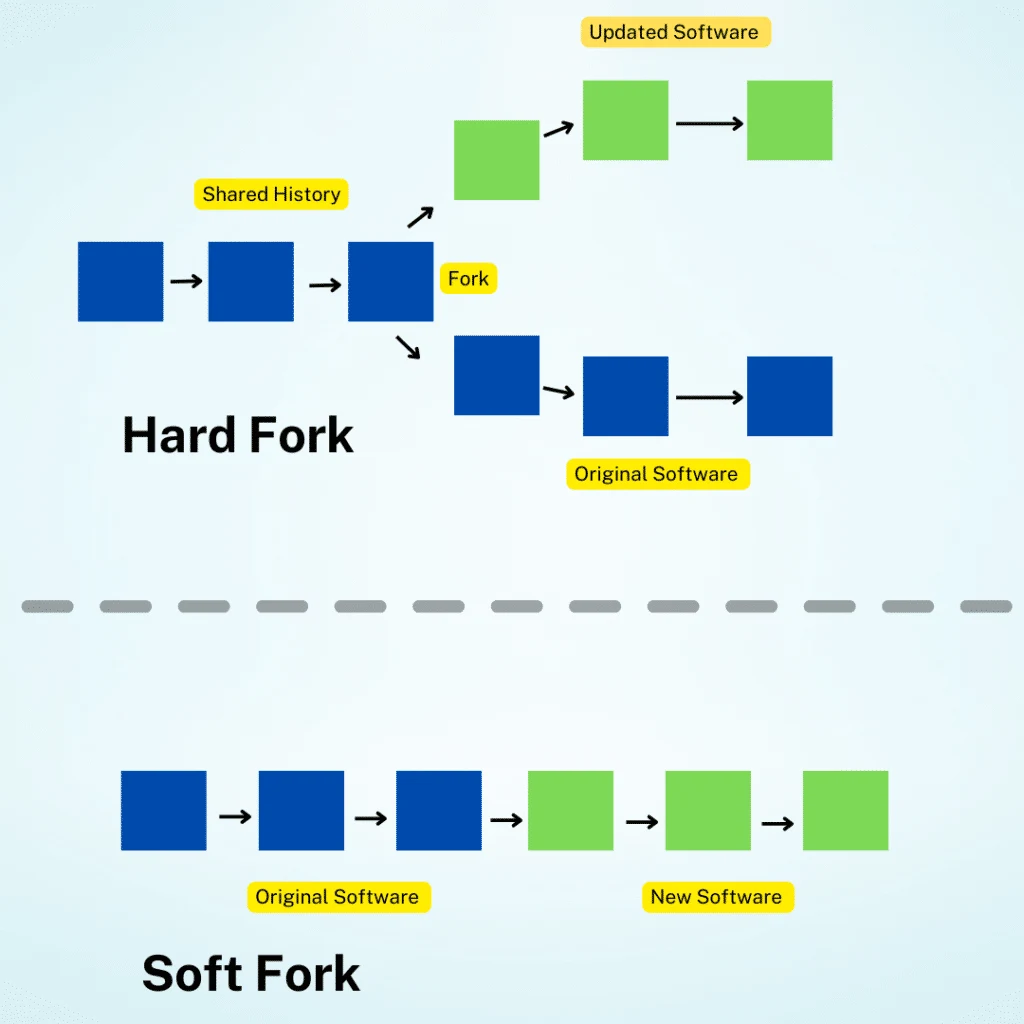What is a Crypto Fork?
A crypto fork is a change to a blockchain’s basic set of rules or protocols. These changes happen for various results. They can be an attempt to fix bugs, reverse hacks, or as a result of disputes after which one group decides to go in a different direction.
The Long Definition
A fork refers to a divergence in the protocol of a blockchain network. It occurs due to a change in a blockchain network’s protocol or basic set of rules. Reasons for this change include blockchain upgrades, bug fixes, reversing hacks, or as the result of disputes within the community.
Forks typically result in the emergence of a new version of the blockchain. These are classified as either hard forks or soft forks depending on whether they are backward-compatible. The term ‘backword-compatible’ refers to the ability of a new implementation of a system to work seamlessly with the older version.

Types of Forks
Forks are classified depending on how big the change is to the protocol and its effects. There are two types; a soft fork and a hard fork.
- Soft Fork: This is a relatively minor change. The resulting network is backward compatible. It works seamlessly with the older version of the blockchain, allowing both to continue working as one. Soft forks are typically used to bring new features and functions to a blockchain’s protocol.
- Hard Fork: This is a change that is so drastic that the new network is no longer compatible with the existing one. This creates an entirely new blockchain. It is separate from the old one and has its own set of rules.
Why are Forks Important?
Sometimes a crypto fork happens to improve the blockchain by adding new features or functions to the network. A recent example is the Bellatrix upgrade. It set up the Ethereum blockchain for The Merge, an event that shifted the network to a new consensus mechanism called proof of stake.
It can also be fixing a bug, like the Bitcoin fork of August 2010. The bug was spotted when a transaction created over 184 billion bitcoin out of thin air. This bug is known as an overflow bug. Fortunately, it was fixed by a soft fork that deleted the additional Bitcoin.

Forks and Agreements
Blockchains, like Bitcoin and Ethereum, are open source. They rely on members of their communities to develop and maintain the software code. Before a fork occurs, there must be a consensus in the community.
No one can just implement a crypto fork at will. They must first make a proposal to the community, outlining what the fork intends to achieve. The community then votes on whether to move forward with the fork or not.
Forks and Disagreements
Sometimes, the community disagrees on the best way to improve or fix a blockchain. Some members want the blockchain to change, while others do not. Such a dispute may end with a hard fork– the network splitting into two separate blockchains. Typically, one blockchain retains the old rules and the other follows new rules.

The Ethereum blockchain provides a good example. In 2016, The DAO, a decentralized autonomous organization was hacked. This hack resulted in millions of dollars in losses.
One group in the community proposed a change that would roll back the blockchain. Another group strongly opposed this option. A vote did not settle the matter. The outcome was a hard fork in which one group formed a separate blockchain which they called Ethereum Classic.
Bitcoin has also had its share of disputes. In 2017, there was a discussion about how to best increase the network’s throughput. Throughput refers to the number of transactions per second (tps) a blockchain can handle. They could not reach an agreement and one group split off and created Bitcoin Cash.
